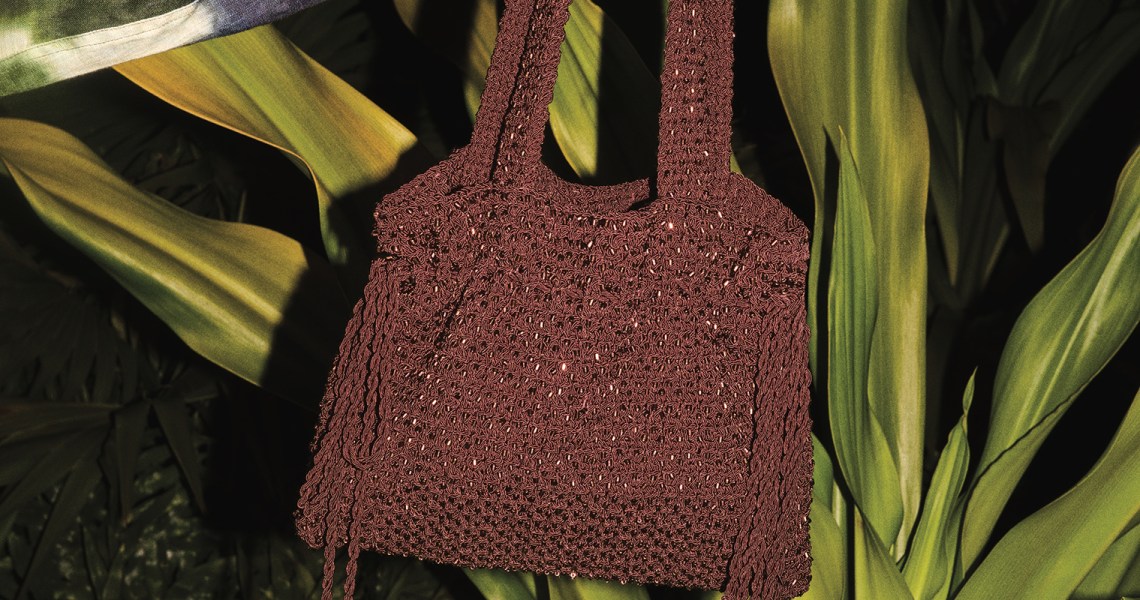This week, a look at how brands across price points are targeting the active luxury shopper. Scroll down to use Glossy+ Comments, giving the Glossy+ community the opportunity to join discussions around industry topics.
The old canard that luxury is recession-proof has held true throughout the last year of economic downturns and reduced consumer spending. While companies like Gap have seen losses in the hundreds of millions, brands including Hermès and Chanel are making record sales. Louis Vuitton has even reached its highest-ever market valuation in this climate.
This dynamic has led brands and retailers that have previously focused on the lower and middle end of the consumer income bracket to begin considering ways to target those higher-income consumers. While it would be extremely difficult for a non-luxury brand to make a full pivot to be on par with brands like Chanel and Hermès, these brands have found ways to attract those customers.
In April, the denim brand Frame made one such effort. The brand’s core jeans are certainly premium, retailing for close to $300 a pair but far from the price level of a brand like Gucci, which sells denim for over $1,000. At the end of April, Frame released a collection co-created with British Vogue fashion director Julia Sarr-Jamois that included a crocheted bikini and tie-dyed camisole dress, among other styles. All were sold in Frame’s normal price range except for one item: a pair of Swarovski-crystal-encrusted jeans retailing for $11,995.
There’s only a small run of the crystal jeans — fewer than 10 were made — but Frame founder and creative director Erik Torstensson said he still hopes it will bring a level of exclusivity that Frame’s usual products don’t offer.
“We wanted to create the ultimate evening jean, and our friend Giovanna Battaglia, who is creative director at Swarovski, seemed like the perfect person to realize this ambition,” Torstensson said. “The $12,000 price tag seemed steep, but we have already had a huge amount of interest, and we expect the limited edition run to sell out. The price reflects the craftsmanship that has gone into making each pair of these jeans. To us, they are a work of art. The lucky few that get their hands on a pair will know they are one of only a few in the world to own them.”
In ThredUp’s first quarter of 2023 earnings, reported earlier this week, the company revealed that sales among the lowest-priced product segments had decreased by 24% while sales in the most expensive segments had increased by 6%. On the call, CEO James Reinhart said ThredUp is adjusting its marketing messaging and products featured on the homepage to target non-budget buyers for the next few quarters, until the anticipated return of budget buyers at the end of the year.
Ad position: web_incontent_pos1
In the acquisition space, Authentic Brands Group — known for owning mall brands like Aeropostale and Forever 21 — struck a deal with Vince Holding Corp. in April to sell clothes from the Vince brand. Vince isn’t pure luxury; it’s more on par with Frame, from a price standpoint. But it is a step above many of the other brands in Authentic’s portfolio. At the time, Authentic’s CEO Jamie Salter cited the acquisition as part of the company’s goal to target the higher end of retail.
The strength of the high-end luxury consumer can also be seen in recent earnings from brands like Mytherea and Tapestry, where more expensive and full-price products are driving sales over discount and budget items.
In Tapestry’s third-quarter earnings, reported on Thursday, the company announced that its revenues had increased 9%, surpassing expectations. These sales were driven primarily by full-price sales, CEO Joanne Crevoiserat said.
“Specifically in North America, we saw an increase in sales at full-price accounts while continuing to reduce off-price exposure as we focus on brand elevation,” Crevoiserat said.
Todd Kahn, president of Coach, said that strategy has been particularly effective at Coach. The brand has been cutting back the number of products available and focusing only on the most profitable, most expensive products.
Ad position: web_incontent_pos2
“Since we started our innovation and our transformation three years ago, we cut out almost 50% of our SKU count,” Kahn said on the call. “We’re not chasing top line. We are securing our margins, building a new customer base who are transacting at higher [average unit retail price].”
Mytheresa’s earnings on Wednesday told a similar story. Full-price, non-discounted customers made up the bulk of the 18% sales growth in the last quarter. Additionally, Mytheresa saw a 6.7% growth in gross merchandise value from top spending customers.
“Our margin has been impacted by the strong promotional intensity of many competitors in Q3, but we delivered profitable growth,” said Michael Kliger, CEO of Mytheresa. “We remain very much focused on our strategy of best customer experience and high full-price share, yielding 36.8% top customer GMV growth in Q3.”
Charles Gorra, CEO of the luxury handbag resale platform Rebag, said that the strength of the luxury customer is something more brands should be paying attention to.
“For three years, we’ve been talking about a recession, … and maybe you’d expect the luxury consumer to slow down somehow,” Gorra said. “That is not really happening. Despite Covid and inflation and geopolitics and all sorts of things, the luxury consumer is still there and still strong. LVMH now has a top 10 market capitalization in the world. Clearly, something’s working.”
Inside our coverage
Luxury Briefing: A new shopper is transforming the luxury watch market
Resale companies seeking profitability are eliminating low-margin products
Want to discuss this with our editors and members? Join here, or log in here if you're already a member.




